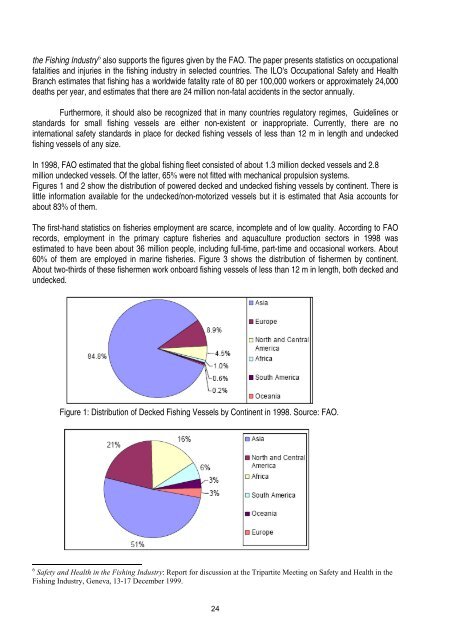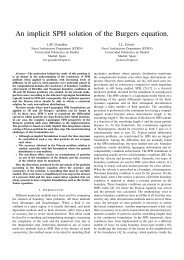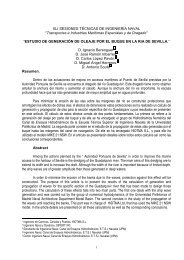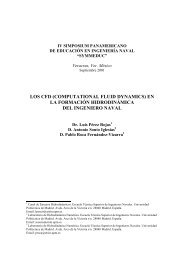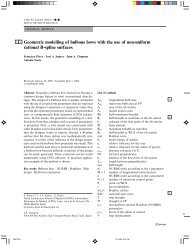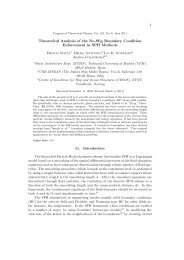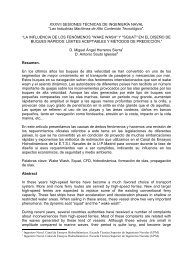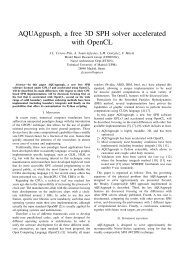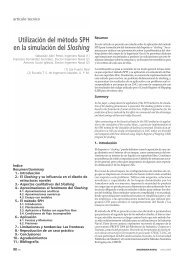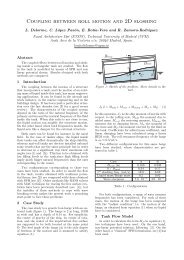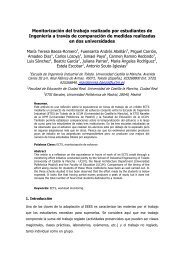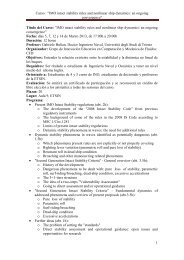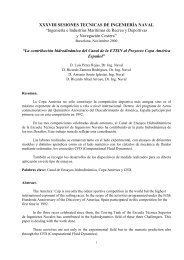imo and the safety of fishing vessels: past, present and future
imo and the safety of fishing vessels: past, present and future
imo and the safety of fishing vessels: past, present and future
Create successful ePaper yourself
Turn your PDF publications into a flip-book with our unique Google optimized e-Paper software.
<strong>the</strong> Fishing Industry 6 also supports <strong>the</strong> figures given by <strong>the</strong> FAO. The paper <strong>present</strong>s statistics on occupational<br />
fatalities <strong>and</strong> injuries in <strong>the</strong> <strong>fishing</strong> industry in selected countries. The ILO's Occupational Safety <strong>and</strong> Health<br />
Branch estimates that <strong>fishing</strong> has a worldwide fatality rate <strong>of</strong> 80 per 100,000 workers or approximately 24,000<br />
deaths per year, <strong>and</strong> estimates that <strong>the</strong>re are 24 million non-fatal accidents in <strong>the</strong> sector annually.<br />
Fur<strong>the</strong>rmore, it should also be recognized that in many countries regulatory regimes, Guidelines or<br />
st<strong>and</strong>ards for small <strong>fishing</strong> <strong>vessels</strong> are ei<strong>the</strong>r non-existent or inappropriate. Currently, <strong>the</strong>re are no<br />
international <strong>safety</strong> st<strong>and</strong>ards in place for decked <strong>fishing</strong> <strong>vessels</strong> <strong>of</strong> less than 12 m in length <strong>and</strong> undecked<br />
<strong>fishing</strong> <strong>vessels</strong> <strong>of</strong> any size.<br />
In 1998, FAO estimated that <strong>the</strong> global <strong>fishing</strong> fleet consisted <strong>of</strong> about 1.3 million decked <strong>vessels</strong> <strong>and</strong> 2.8<br />
million undecked <strong>vessels</strong>. Of <strong>the</strong> latter, 65% were not fitted with mechanical propulsion systems.<br />
Figures 1 <strong>and</strong> 2 show <strong>the</strong> distribution <strong>of</strong> powered decked <strong>and</strong> undecked <strong>fishing</strong> <strong>vessels</strong> by continent. There is<br />
little information available for <strong>the</strong> undecked/non-motorized <strong>vessels</strong> but it is estimated that Asia accounts for<br />
about 83% <strong>of</strong> <strong>the</strong>m.<br />
The first-h<strong>and</strong> statistics on fisheries employment are scarce, incomplete <strong>and</strong> <strong>of</strong> low quality. According to FAO<br />
records, employment in <strong>the</strong> primary capture fisheries <strong>and</strong> aquaculture production sectors in 1998 was<br />
estimated to have been about 36 million people, including full-time, part-time <strong>and</strong> occasional workers. About<br />
60% <strong>of</strong> <strong>the</strong>m are employed in marine fisheries. Figure 3 shows <strong>the</strong> distribution <strong>of</strong> fishermen by continent.<br />
About two-thirds <strong>of</strong> <strong>the</strong>se fishermen work onboard <strong>fishing</strong> <strong>vessels</strong> <strong>of</strong> less than 12 m in length, both decked <strong>and</strong><br />
undecked.<br />
Figure 1: Distribution <strong>of</strong> Decked Fishing Vessels by Continent in 1998. Source: FAO.<br />
6 Safety <strong>and</strong> Health in <strong>the</strong> Fishing Industry: Report for discussion at <strong>the</strong> Tripartite Meeting on Safety <strong>and</strong> Health in <strong>the</strong><br />
Fishing Industry, Geneva, 13-17 December 1999.<br />
24


